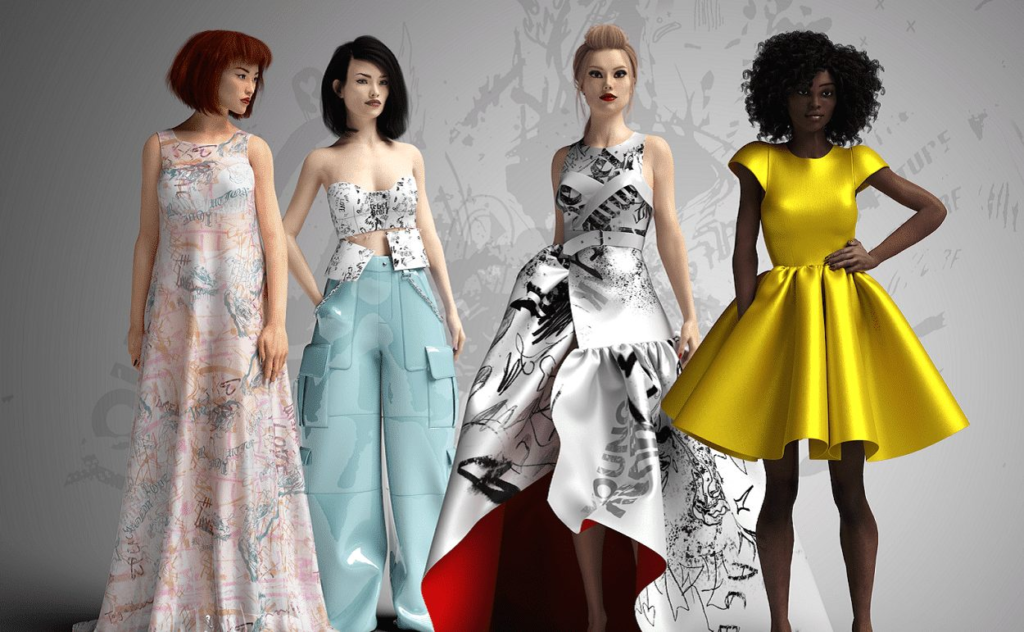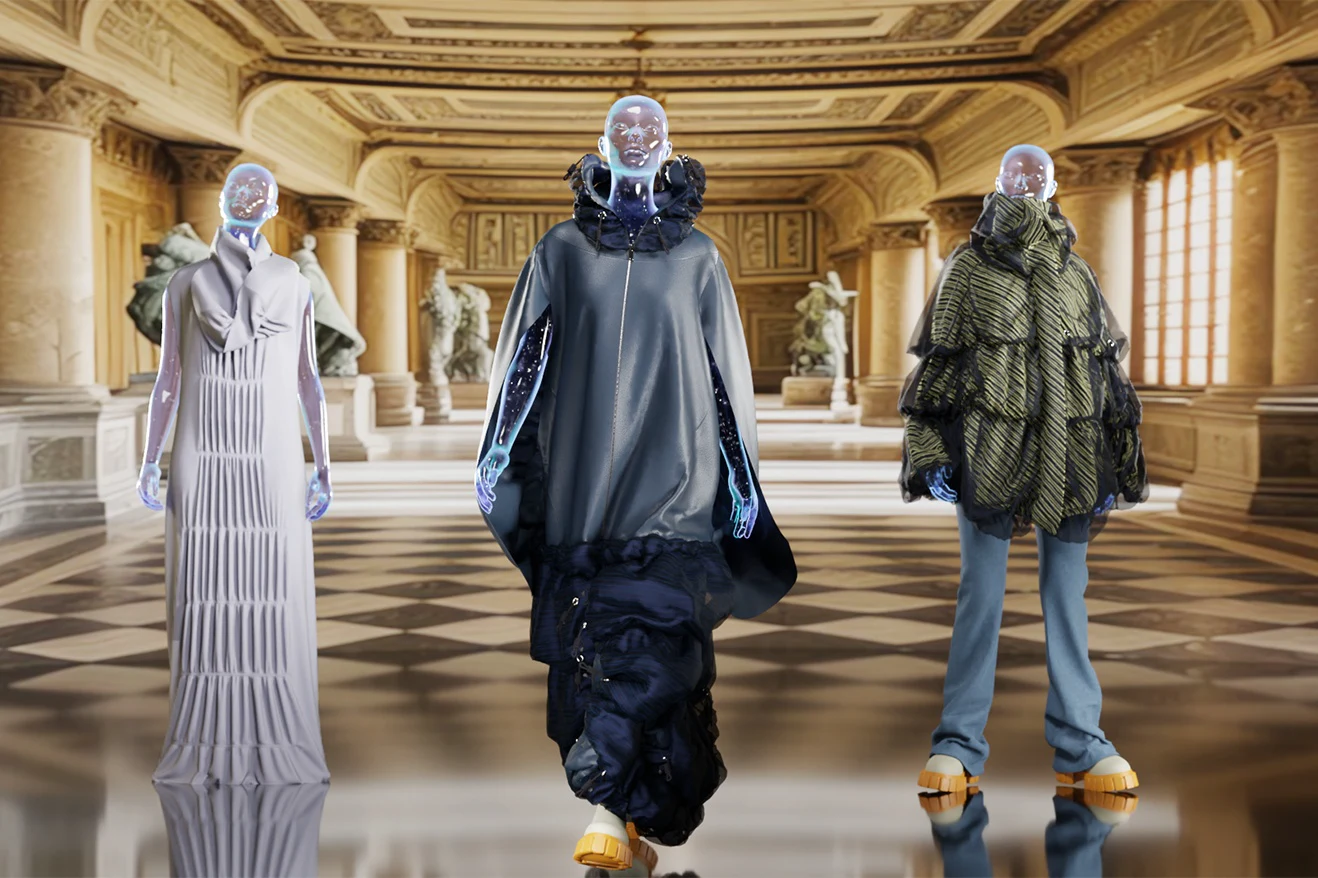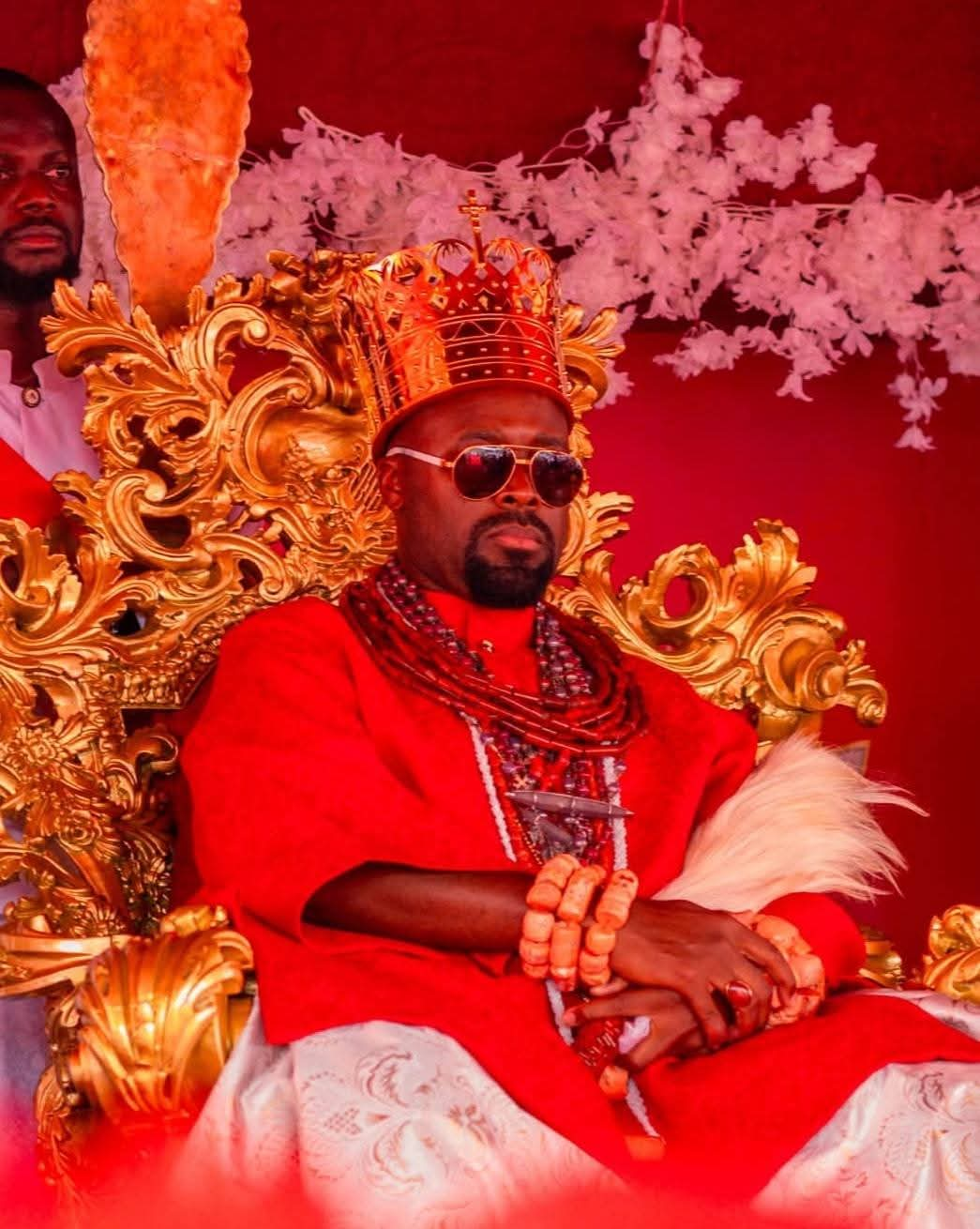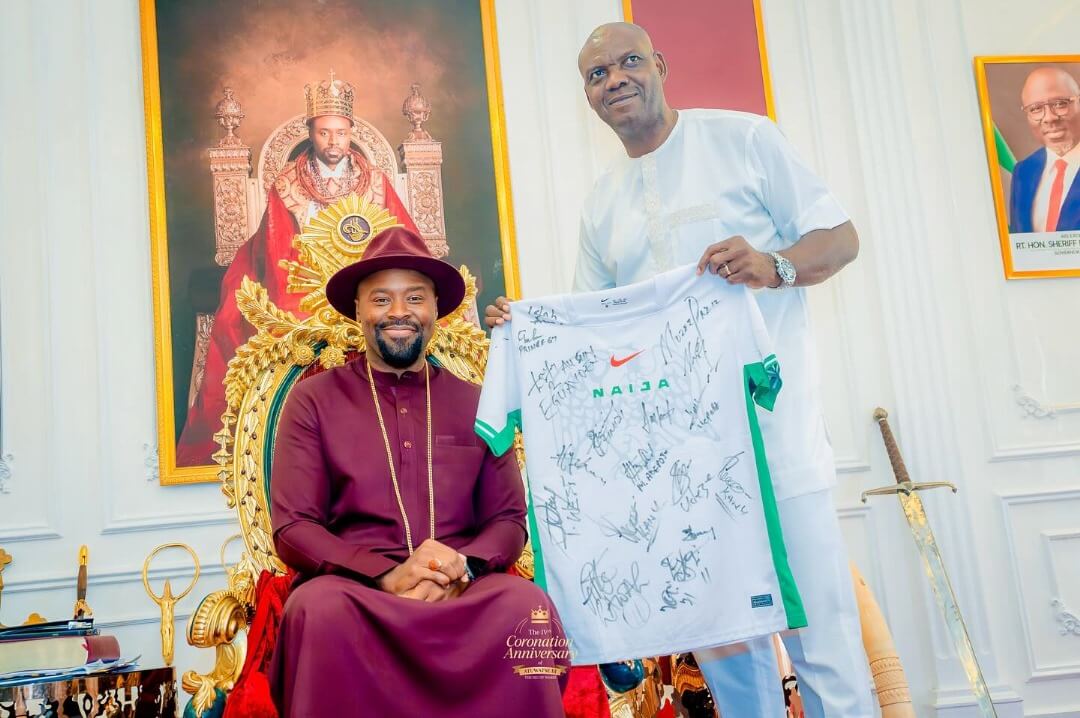- Judith Akatugba
- 0 Comments
- 604 Views
It may be necessary to radically alter your perspective on fashion before you can fully embrace your personal style in virtual spaces.

You yawn, stretch, open your closet, and ignore your uncle’s texts as you wake up. It’s time to choose your current identity. Above a line of immaculate Nike sneakers hang your Gucci jumper and Burberry trench. However, you feel a little less human right now.and more akin to an extremely sophisticated mollusk. You see the eight-armed sweatshirt you bought specifically for this situation. You will assume the form of an octopus today.
Read Also: Amidst an Appeal, a Spanish High Court Suspends Apple and Amazon’s $209 Million Fines
Welcome to the metaverse, where dressing will become an even more logical—and, most likely, wildly illogical—part of your daily ritual of self-expression. Social media and the internet have already profoundly transformed how we wear and purchase clothing, but the arrival of Web3 is going to completely disrupt the way we think about fashion in general. Soon, getting dressed will involve more than just putting on a shirt and jeans and leaving the house. Selecting the exact form—human, animal, object, or otherwise—that best captures who you are at any given time will be the first step, followed by outfitting that avatar with creations created by designers who are not constrained by the constraints of the physical world.
A increasing number of fashion establishment labels are jumping headfirst into the metaverse, joining a new wave of entrepreneurial digital businesses that are trying to mold the future of personal style in the metaverse. In the spring of 2021, Gucci began working with the gaming platform Roblox. The same month, they unveiled a line of NFTs and later that month, they bought a piece of virtual real estate on The Sandbox, an Ethereum-based virtual environment. With its Collezione Genesi NFTs, Dolce & Gabbana made an incredible 1,885.719 ETH (about $5.5 million at the current exchange rate) in September. In March, the brand hosted the inaugural Metaverse Fashion Week on the Decentraland virtual world platform. CEO Cédric Charbit believes that Balenciaga’s new branch, which was established in December, would take the brand “to the next level” since it is focused on creating experiences and goods for the metaverse. In recent months, Ralph Lauren, Burberry, Adidas, and Louis Vuitton have all revealed their own metaverse initiatives. Perhaps most notably of all, Nike displayed the logos of the NFT sneaker company alongside those of its recognizable primary brands—Nike, Jordan, and Converse—when announcing its acquisition of RTFKT in December.
According to Brian Trunzo, the metaverse lead for Polygon Studios, a blockchain technology company, which recently announced a partnership with the Council of Fashion Designers of America to help guide fashion companies into the Web3, “I got chills when I saw that [Nike] press release.” “You forget that LeBron isn’t even considered a full subsidiary brand at Nike, so they were subtly implying that RTFKT is more important than LeBron.” It gave the area legitimacy.
These initiatives demonstrate that digital fashion is here to stay and that the industry as a whole is totally committed to it. However, there are a few rather significant obstacles that must be overcome before the “digital apparel market to dwarf the physical apparel market,” as predicted by Trunzo, can occur “within the next decade or two.” Making the general public aware of what digital fashion is and why it matters is the first and largest obstacle.
In the end, a large number of us already spend the majority of our lives in the metaverse. According to Bobby Kim, cofounder of legendary streetwear brand The Hundreds from Los Angeles, “I could argue that our lives in the physical world are our secondary lives these days.” Adam Bomb Squad, an incredibly successful NFT offshoot that Kim founded in 2021, generated $8 million in sales in its first week and allows owners to purchase unique physical and digital garment drops. “Most of our lives are spent online.” If so, Kim argues, the clothes we choose to wear on our real bodies shouldn’t matter nearly as much as how we present ourselves online. According to Kim, “fashion is fundamentally a tool for identity and self-expression.” “I believe that we are at a turning point in history where fashion will be redefined. There isn’t a body now.
You might theoretically assume whatever shape or form you choose in the metaverse. It’s possible to be formless, translucent, or invisible. To go a little wacky and philosophical, it indicates that fashion will soon transcend being merely an external representation of who we are and instead represent, as Kim puts it, “what your soul is.”
According to Kim, “some people might identify as a blue square.” Some may recognize themselves as telephone poles. And simply consider what that implies. It may offend a lot of people and seem incredibly absurd and strange. It’s not as though these folks genuinely believe that in the real world they are telephone poles. However, they would like to express themselves through art since, for whatever reason, it speaks something about them. Put another way, your choice of form in the metaverse fulfills the same function as the clothes you wear in the actual world—after all, your avatar is a work of fashion.
What’s the biggest obstacle to that nebulous picture of limitless possibilities? Our endless imaginations and technology are yet a long way off. The majority of futurists envision a seamless, high-definition visual expression, but the processing power of the average laptop or smartphone simply isn’t up to par. Some of the largest platforms, such as The Sandbox and Decentraland, are still stuck with blocky graphics that seem like they belong in an 80s sci-fi film in order to make them function smoothly for a wide range of users. Furthermore, the majority of people still find it challenging to interact with the metaverse despite all the hoopla and investment. Currently, it’s a loose assembly of arenas, like a bewildering Moroccan market, vying for your money and attention: social media, decentralized open worlds, blockchain, and centralized gaming platforms.
That’s the role of innovators like Charli Cohen. For almost a decade, British fashion designer Cohen, 32, has been at the vanguard of the digital fashion revolution. with order to reach a larger worldwide audience, she started experimenting with augmented reality alongside her physical fashion brand. Eventually, she worked with video games like Assassin’s Creed and assisted with the transition of established fashion retailers like Selfridges onto Web3. She is now seeking to streamline the digital fashion experience through RSTLSS, her recently launched platform supported by Paris Hilton, which attempts to breach the virtual barriers that are now impeding both customers and producers.
Cohen states, “We were working on more and more joint ventures where we were putting our products in various gaming and social contexts.” “It was just a very difficult licensing process that was complicated, and the customers did not have a great experience.” With the help of RSTLSS, users will be able to personalize wearables—digital clothes for their avatars—mint them as NFTs, take them into a variety of metaverse settings, such as video games, open worlds, and social media avatars, and purchase a physical version to wear in real life. The goal is to completely remove all of that clunkiness. Suppose you wanted a new Billie Eilish hoodie, you could buy it on RSTLSS in one go and wear it to school, on Twitter, in Decentraland, and on Fortnite.
From Cohen’s perspective, most of us won’t even understand that this is all common sense before it happens. She makes the observation, “Consider this: We’re having this conversation on Zoom.” Prior to 2020, no one was conversing on Zoom. Similarly, with Web 2.0 social media, you had your early adopters and then all of a sudden everyone was using it without really giving it much thought. And just as selecting a profile image and customizing your Instagram grid are important aspects of social media identification, dressing yourself in virtual apparel will become a habitual activity.
In a way we haven’t seen in millennia, the nature of fashion and identity will be completely upended if and when that widespread adoption really takes place. Revisiting 2010s trends always feels like it’s on the corner since nostalgia cycles have become so strong in our day and age that Y2K fashion is more in style now than it was twenty years ago. Perhaps, despite all the dangers and problems associated with Web3 in its current form, the metaverse will be the key to propelling fashion into the next phase of its growth.
Although the details of that next stage are unknown, it doesn’t appear as though the concept of brands is in danger of disappearing: names like Gucci and Nike continue to have a great deal of cultural cachet in both the physical and digital spheres, and they continue to be essential components of identity and expression. If anything, the metaverse will merely open up more channels for you to interact with the companies you already love as well as those that will surface as the landscape continues to shift.
Therefore, even if some experts predict that you’ll spend more money on digital fashion in the future, it probably won’t ever completely replace your real-world wardrobe. Eventually, though, we’ll arrive at a stranger, more intriguing realm where, instead of our metaverse clothing drawing inspiration from its real-world equivalents (having a digital replica of a Balenciaga skirt that debuted on the catwalk, for example), the opposite starts to occur. When the clothes you put on your seven-eyed, wing-armed, web-footed avatar begin to affect what you wear to work, how will that look? When we decide to disconnect from technology and engage with others face-to-face, how will designers adapt the liberty of identity and expression that we have all been afforded online?
As we move further into our crypto-fueled future, fashion—for all of its perceived fripperies—will only become more vital, weird, expressive, artistic, and powerful.











